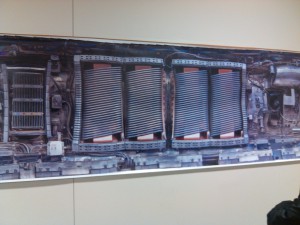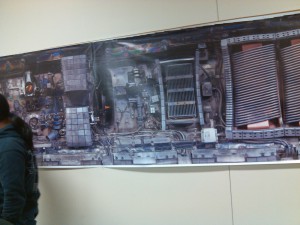Cutting the production of polluting gas is a very important matter that the Obama administration has set as a goal. The president has promise to make policies and take other measures to cut back on the emission of harmful gas, the creation of new jobs, a more reliable and cost effective energy sector. To achieve these goals, the president with the help of his administration has taken many steps in different areas. Some of these areas are:
Policies and rules:
Power plants are responsible for one-third of all the greenhouse emission in the United States. To be able to cutback the emissions, the administration has set some emission limit and rules such as “the carbon pollution standard for new power plants”. It has also created programs for local governments and companies. A direct result is that more than 35 states have renewable energy target in place, and more than 25 have set energy efficiency targets.
Standard for hydroelectric power plants have been set by using “Red Rock Hydroelectric Plant” to design the standard for high-priority projects.
Federal agencies are also conducting surveys to track progress and facilitate the sharing of best practices.
A draft of a solicitation was issued. This solicitation would make up to $8 billion in loan guarantee authority available for wide array of advance fossil energy projects. It will also support investments in innovative technologies that can cost-effectively meet financial and policy goals, including the avoidance, reduction or sequestration of anthropogenic emissions of greenhouse gases.
A Quadrennial Energy review is also on schedule. This review led by the White House Domestic Policy council and Office of Science and Technology Policy, and the Secretariat will establish the engagement of federal agencies and outside stakeholders.
The Energy Sector:
In 2012, thanks to the permits issues by the administration, we were able to see a 10 gigawatts of renewable energy being produced and a goal to produce 10 more by 2020.
25 utility-scale solar facilities, 9 wind firms, and 11 geothermal plants were created since 2009. These plants have already provided 4.4 million homes and created 17,000 jobs.
The largest consumer of energy in the United States (The department of Defense) is committed to deploying 3 gigawatts of renewable energy (solar, wind, biomass, and geothermal) on military installations by 2025.
The standards set by the Department of Energy will, by 2030, cut consumers’ electricity bills by hundreds of billions of dollars and save enough electricity to power more than 85 million homes for 2 years.
Transportation Sector:
An economy standards for heavy-duty trucks, buses and vans was finalized in 2011. The standards will reduce greenhouse gas emission by 270 million metric tons and save 530 million barrels of oils . One requirement for these standards is that the performance of car produced must be 54.5 miles per gallon by 2025, this will enable drivers to save more than $8,000 in fuel costs and eliminate 6 billion metric ton of carbon pollution.
The use of Biofuels and natural gas has increase. The Departments of Energy and Agriculture are working with private sector to accelerate the development of cost-competitive advanced biofuels for use by the military and commercial sectors. This will enable the country to deploy cleaner fuels, including batteries and fuel cell technologies, in every transportation mode.
With these policies in place and the actions taken by the President Obama administration, we will be able to have a cleaner way of life and be able to leave a less polluted planet to the future generations.
Here is the link to the article:
http://www.whitehouse.gov/sites/default/files/image/president27sclimateactionplan.pdf

